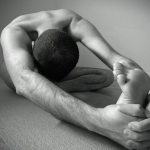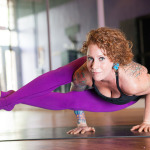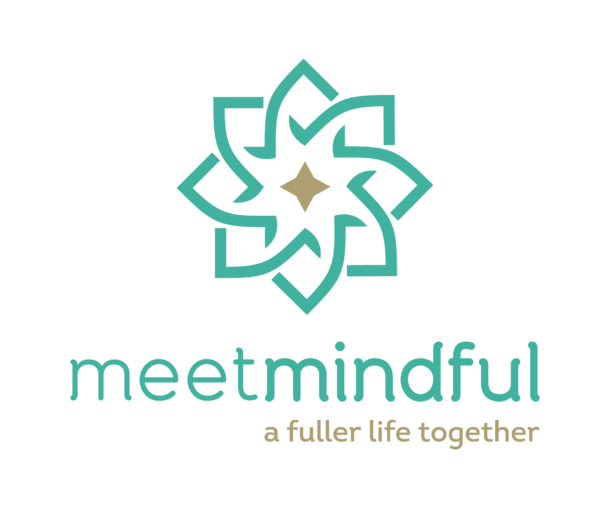Dr. Kristen Hick illustrates how both Asana and dating require “playing with your edge” by pushing your comfort boundaries without causing emotional injury.
For those of you just joining us, take a look at Part I and Part II of our series on The Yoga of Dating.
Here, in Part III, we’ll be looking at the Asana of Dating, or in our model, the postures of dating. Asana refers to the physical practice that most people think of when they think of yoga, but, as you’ll see, it also provides a helpful model for thinking about how we lean in (or out) of new relationships.
The word “asana” originally referred to the art of sitting still, and since has been applied to positioning and holding oneself in various positions. Doing so is designed to bring forth meditation, enhance flexibility of body and mind and cultivate well-being in the yogi.
Sitting still? Holding a position? Sounds easy, right? Well, not when you’re sitting still in a particular position for great lengths of time–that requires both physical and mental endurance. Being able to hold the posture requires you to push past the discomfort until you become steady and comfortable.
So, how do yoga postures relate to dating? Let’s take a look.
Pushing Through Discomfort
From our first contact with a new person, most of us will experience some level of discomfort. This usually takes the form of nervousness, mild fears, anticipation or anxiety. This is normal in most cases. But if you let the physical and mental discomfort control your actions and you shy away (from challenging positions) or opt out (fall out of the pose), you’ll never know the strength that comes with pushing through the discomfort.
Yoga teachers often talk about “working or playing with the edge.” It means to find that sweet spot between too little and too much discomfort.
In the standing posture Extended Side Angle Pose, for example, there are a few variations that serve to minimize or maximize the amount of stretch, flexibility and discomfort involved. Reaching one arm straight to the sky with your opposite elbow rested on your knee becomes more difficult with your opposite arm placed on the floor in front of your bent knee, and even more difficult with your arm placed on the back of your bent knee. Then, if you really want to push the edge, you bind your arms around your bent knee, opening up your chest to the sky.
Dating also involves playing with your edge. With too little discomfort, you don’t grow in your practice (or relationships). You remain comfortable (even if uninspired, or quietly miserable) in the same position and habits you’ve always practiced.
In yoga, too much discomfort may be a sign you’re about to injure yourself. When in too much discomfort, go into child’s pose–a relaxing pose that allows you to re-center and breathe. With application to dating, this may mean you go to a quiet place within yourself, schedule some time to be alone with yourself or just slowing things down before proceeding further.
Too much discomfort in dating may lead you to push the relationship too far, too quickly, or push past boundaries that are quite healthy and necessary. Take it slow, but challenge yourself to push yourself just beyond your comfort zone.
Dualities
During a sunrise yoga class this morning, the yoga teacher praised us for bringing “effort and ease, passion and patience, and giving and receiving” to our practice. A light bulb went on within me.
Dualities are necessary in all aspects of life. Just like yoga, dating is about dualities. It is full of ups and downs, joys and upsets, giving and receiving, dependence and independence, and many more. To be really successful in dating and relationships, you must find peace, acceptance, and balance in these dualities.
Finding Balance
Tree Pose involves standing with two feet planted on the floor, shifting your weight to one leg, bending the opposite knee and placing the sole of that foot on the inner thigh of the straight leg with toes pointed to the floor. Once in this position, you lengthen your spine vertically while at the same time pressing your foot into your inner thigh and your inner thigh presses against your foot. Hold your hands at heart center or to the sky like branches.
Just as the tree pose requires seeking and maintaining balance vertically and horizontally, healthy dating requires balance between developing a relationship with this lovely person before you, the beautiful person within you and the world outside (i.e., friends, family, work, your community). To grow in a relationship with another, you must also grow in multiple directions and stay balanced.
The balance between strength and flexibility is also vital to your dating practice. You must remain firm yet flexible in your boundaries, sense of self and give-and-take in a relationship. Patanjali illustrates this in his story about a mighty tree that falls down when the flood comes, whereas the weed is “humble, simple and supple” enough to bend as the water washes over it, and pops back up when the water recedes. Like the weed, it’s important for us to have a strong core, with humble, flexible branches.
Similar to holding yoga postures, practicing Asana in dating is more difficult than it may seem. Finding a place within you that allows you to play with your edge, while also finding balance and peace with dating’s dualities is a practice that only gets better…with practice.
For more on the Yoga of Dating:
The Yoga of Dating: The 5 Yamas
The Yoga of Dating (Part II): The 5 Niyamas
Reference:
Satchidananda, S. (1978). The yoga sutras of Patanjali. (Patanjali, Trans.). Buckingham, BA: Satchidananda Ashram – Yogaville. (Original work written 5,000 BC to 300 AD)
[image: via kris krüg on flickr]











